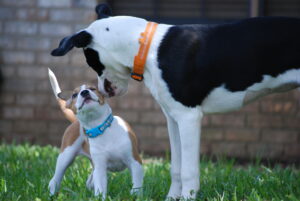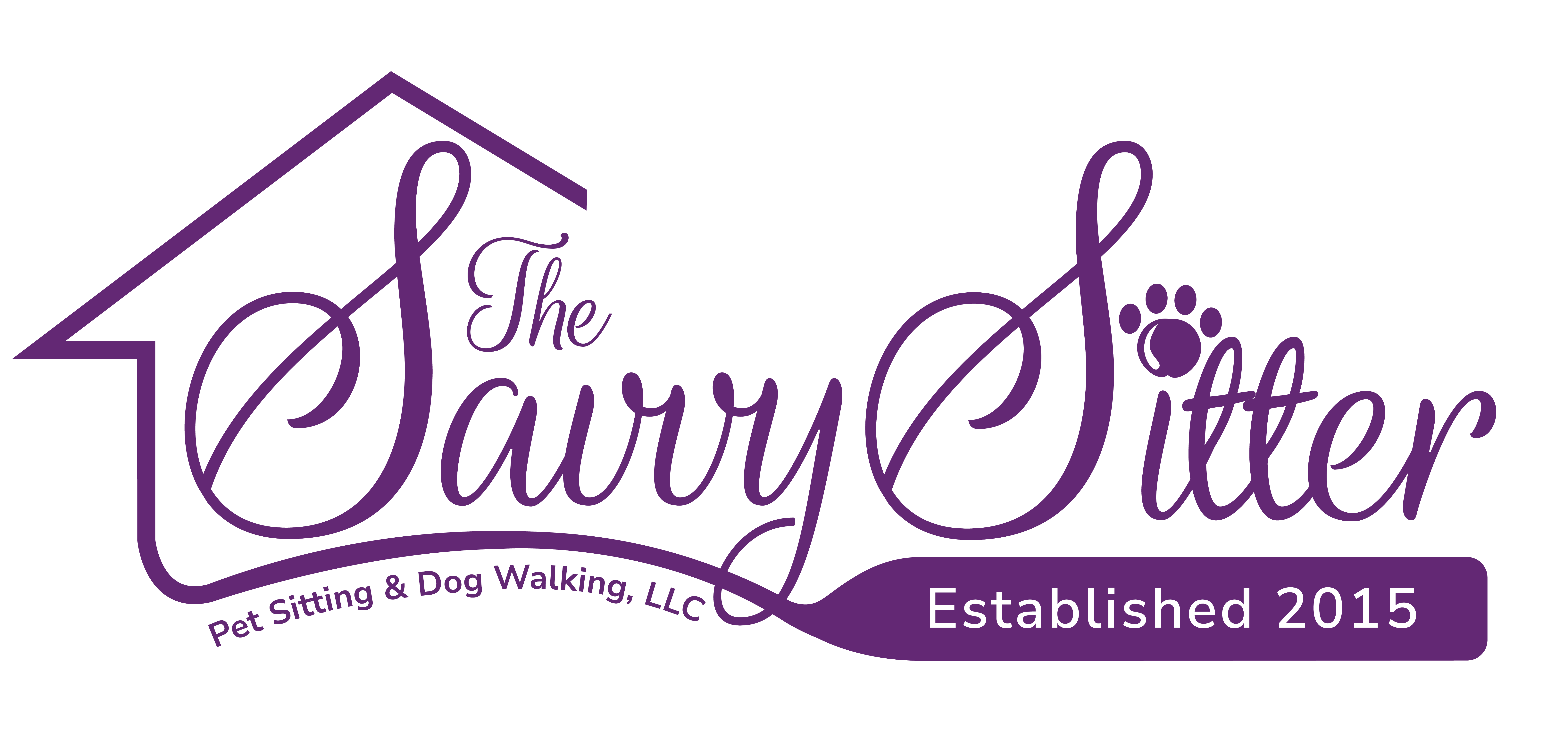How to Prepare For a Puppy: 14 Must Do’s Around the House
June 10, 2021 by Julia Weaver
14 Must Do’s Around the House
Bringing home a new puppy is an exciting time – you’re about to welcome another member of your family into your home, after all. As you know, puppies require a lot of time, attention, and love as they become comfortable with you and their new surroundings. But, it can also be a stressful time for your puppy. So, it’s up to you to prepare for your puppy as well as you can to make the transition as easy as possible on both of you.
From buying the right supplies and deciding on house rules to creating a schedule and training your pup on the right stuff, there’s a lot to remember. Luckily, we’ve asked experts across the country to share their best tips on how to prepare for a puppy.
1. Create a schedule, introduce the harness, and invest in a dog camera
Make walks and training more enjoyable by introducing a walking harness early to your puppy. A harness can help gently guide him/her while on walks and during training without any strain on the puppy’s neck. You can also prepare for a puppy by organizing beforehand and designating a calendar solely for an all-things puppy. This will be the hub of care where you can write everyone’s puppy responsibilities, vet appointments, puppy classes, gotcha/birth dates, and times when you will need someone to watch your puppy. Consider investing in the Furbo Dog Camera. It allows you to check in on your pup anywhere and at any time. You can see, talk and toss treats to your puppy. Put your mind at ease while you are away from home!
– Barks N Purrs Pet Care serving the Los Angeles area
2. Familiarize your puppy with the world
Expose your puppy to as many people, pets, animals, and sounds as possible by 12 weeks of age. That being said, never let a not-completely-vaccinated puppy on any grounds (big box store, park, sidewalk, etc.) where possibly unvaccinated pets may have been.
– Pampered Pups Dog Sitting serving Dallas, TX, and surrounding areas
3. Socialize your puppy at an early age

It’s critical to plan how you’ll socialize your dog. This is something a lot of people don’t know enough about and too often fall short, leaving the pup with preventable challenges. Puppies need to meet 500 new people, places, and things before they are 17 weeks to have the best possible start in life- so planning how you can do this before you even have your new pup will provide the best advantage. You can play socialization games to make sure you consciously provide exposure to new people, places, and things. The majority of socialization needs to happen outside your home. You can also socialize and teach your puppy that the world is a fun place even when you’re not around by taking them to daycare. Prepare your home physically- and prepare yourself and your dog mentally for a happy, well-balanced life through socialization!
– Motley Zoo Animal Rescue in Redmond, WA
4. Ignore the crazy and love the lazy

Reinforcement is SO powerful. A dog may find your attention to be quite rewarding, leading to unwanted behaviors potentially being reinforced when you give them attention during their ‘crazy’ behavior. Use your love wisely and show up for those lazier, calm behaviors and you’ll see more of that instead. Potty training your puppy? Think, cartwheel and a cookie! Create 1 or 2 spots that deserve that cartwheel from you and a cookie, and this will speed up your dog trying to get outside to go to the bathroom. Minimal reinforcement whenever they go somewhere that is still appropriate, and nothing for going inside.
– Walk A Pup serving Salem, MA and surrounding areas
5. Crate train your pup the correct way, right away
Their comfortable crate should be a calm, safe and rewarding haven for your puppy to relax, chill and call their little home away from home. It should never be a place of punishment or negativity. Create a predictable crate routine for your new puppy. After playtime, a nice long walk, or mealtime, this is the perfect time to relax in their crate. Then, after some rest and relaxation, go right outside to their designated “potty spot” and reward with a treat after your pup does their business. Repeat this routine. Puppies, like children, love having a normal routine filled with learning, positive reinforcement, and rewards.
– The Peaks Pet Nanny with locations in the state of New Jersey
6. Choose a potty spot to establish a routine
Start by taking your puppy to an outside area where you want them to go potty. It’s best to stick with the same place for a while, so they start to establish a routine. Once outside and they have relieved themself use a command that you’ll stick to, like “spend a penny.” An old British saying referring to the (former) use of coin operation locks on public toilets. A British friend of mine used to say this to her dog every time she took her out to the potty. I adore it, and it worked.
– Second Chance Rescue in Whitestone, NY
7. Make sure your valuables don’t become chew toys
Anything and everything is fair game as a chew toy – so go ahead and put everything that could be desirable away. Don’t forget to put your toilet paper somewhere up high – it’s too tempting to pull and chew. The Kong Stuff-A-Ball is a great puppy chew item. Also, make sure all your trash cans have lids. Make sure you have proper gates in front of doors to the outside so the pup can’t run out when you aren’t looking. Plus, check and make sure your yard has proper fencing. And, don’t forget to secure the pool area. Prepare an area for the pup’s crate in your home and make it a safe place with blankets and a plush toy.
– See Jane Walk Dogs serving Downtown Austin, TX
8. Avoid big trips the first few months
Do not plan any big trips the first few months of having your new pup. You need time to build rapport and trust to help your pup feel safe and secure in their new home. Also, feed your pup from a Kong versus a bowl because it occupies their time, it’s soothing, and engages their brain. Buy a few and put them in the freezer.
– See Jane Walk Dogs serving Downtown Austin, TX
9. Always make time for sleep
When puppies are 2-3 months old they require about 18-20 hours of sleep per day. If your fur baby doesn’t get enough time to snooze, behavioral issues can result.
– The Savvy Sitter, Pet Sitting and Dog Walking LLC serving West Orange County, FL
10. Purchase a long leash to allow your pup to explore
Preparing for a puppy and welcoming them to their forever home is a great balancing act. While keeping them safe, it’s now your opportunity/responsibility to learn how to communicate with them and to show them everything that this wild world has to offer. We recommend a long training lead (15 to 50 ft) to give your puppy space and security required to confidently explore their new world.
– Dogs Colorado serving Denver, CO, and surrounding cities
11. Create a routine, set reasonable expectations, and be consistent
I think the best thing pet owners can do when bringing a pet of any age into a new home is to set reasonable expectations. If you don’t want your puppy on furniture or in a certain room, commit from day one. Also, pets thrive when they have a schedule so it’s important to create a routine that’s easy to stick to. Lastly, be consistent. If you don’t observe the rules, your pet won’t either. Then they will be confused when they are in trouble.
– Luv My Sitter serving the greater Austin, TX area
12. Make safe spaces both inside and outside
The best thing you can do for your new pup to help them adjust to their new home is to make sure they have safe spaces both inside and outside your home. Securing your fence and yard, as well as providing a kennel or their own corner of the house they can retreat to when they need space is paramount to their wellbeing. And, of course, if your pup is interested in couch cuddles, we recommend a washable couch cover.
– Puget Paws, LLC serving King County and Snohomish County
13. Prioritize potty training and house training
Bringing a new puppy into a household is an exciting time but can also be very unnerving for new pet owners. Housetraining is one important topic to hyper-focus on. Take your new puppy outside frequently (at least every two hours) and immediately after eating, drinking, or sleeping. When outside, bring puppy-friendly treats and pick a repeatable word (hurry, get busy, etc.). When they go to the bathroom outside, give them a treat and throw a party while using “good” + chosen term (ex: “good busy”). Never rub your dog’s face in their accident if they make an accident in the house (this can cause her/him to fear you and they may start hiding when the urge comes). Only correct them for accidents if you catch them directly in the act (off, no, bad, etc.).
– Boston Dog Butlers serving Boston, MA
14. Keep your pup stimulated to tire them out
Puppies are full of energy and love to explore their new world every chance they get. That said, puppies only need about 10-15 min of pure stimulation before they get tired and are ready for a nap. Lick mats and rubber toys filled with bone broth, like the PetSafe Chilly Penguin Freezable Treat Holding Dog Toy, are great at keeping your pup stimulated, and perfect as they are teething. And, consider investing in tracking devices like Fi Collar to know where your pup is at all times and put your mind at ease. It’s a sad truth, but puppy theft is on the rise.
– Doggie Bliss in Santa Monica, CA
About the Author:
Savanna Westwood
Savanna Westwood is the Owner and Founder of The Savvy Sitter, Pet Sitting and Dog Walking, LLC. She has grown up with animals all her life and enjoys spending time with them. Savanna has lived in the Winter Garden and Windermere Area for over 30 years. When she is not taking care of Fur Friends, one can find her reading, practicing archery, riding, and devising ways to provide additional and excellent services to clients. Savanna is a Certified Professional Pet Sitter with Pet Sitter International's CPPS certification and also holds certification in Pet First Aid and CPCR for Pet-Care Professionals.

